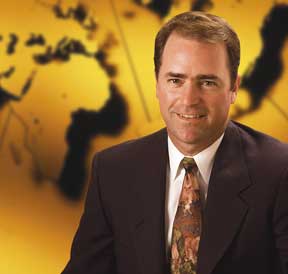Remote Reps
Using outside sales channels at home and abroad
Let's face it, you can't be in front of every potential client when they are ready to buy, and hiring direct sales people to cover a large geographic territory can be daunting for small-to-medium-size businesses. Recruiting, hiring, training, and managing a direct sales force can also be cost prohibitive for many businesses whether they are trying to sell country-wide or worldwide.
There are thousands of independent sales reps and distribution organizations that exist across the globe, and with a little education and investigation, you can find out if they present an opportunity for you to reach a broader audience at a fraction of the cost of maintaining a direct sales force.
Here are some straight forward steps to determine what kind of "sales machine" is best for you.
Step 1: Define your sales pie and examine all of your sales opportunities.
List the markets you're in and which products you sell in each. Focus on your target audience(s). If you have multiple markets, do they all use the same types of products? You may need to establish separate categories of customers that need different sales approaches.
If you're selling low-priced products through retailers all over the country, you can't reach them with a direct sales force. Generally, the more of a commodity your product is, the more you need a network of distributors and large outlets.
If you make custom, high-priced equipment with value-added features that require explanation and persuasion, you must have people on the street. Advertising and distributors can do part of the job, but you also need faces talking to faces, especially for large customers.
In the case of international sales, your representation must have an understanding of not only the markets you're serving, but also of the culture, language, and buying habits of the society.
Step 2: Pick a sales channel or multi-channels.
Manufacturers' Representatives (reps).Using reps is outsourcing your sales force but since they don't work directly for you, reps can be difficult to manage.
Normally an independent sales rep will represent multiple companies and/or product lines. It is important to understand how high a priority your product or services will be to that rep. But with the right rep organization, you can reduce your cost of sales 10 percent or more because the rep is paid on a commission basis. There are no salaries, insurance costs, etc.
Look over reps as if you were interviewing them for inside sales. Would you want them working for your company? Will they have your best interests in mind? Are they going to hustle new accounts?
In the case of international sales, make sure when looking for representation, you are able to understand the breadth of products and/or services that the rep company sells.
Keep reps constantly focused on promoting your line. Cash is the greatest incentive . bonuses, specials, spiffs, commissions, etc. Recognition and awards are not the motivators that they are with internal salespeople.
Independent Distributors. Unlike manufacturers' reps, who are like your sales force, distributors are like your customers. That's because your primary dealings are with them, not with the end users you never see.
Evaluate candidly how important your company and your products will be to a distributor. If your line isn't going to be one of their flagship brands, it'll be hard to get the share of mind you need.
How do you entice distributors to work hard for you? Simple. Increase the inventory turns in their warehouses. But how best to do that depends on the market and the distributor. It may take vigorous "pull through" marketing, where you stimulate user demand for your products through advertising, promotions, etc. The relationship between inventory turns and the availability of product is especially important when dealing with international distribution. There's a surefire way to find out what works best for your distributors ask them!
The CEO's role in sales channels management
Changing an existing sales framework requires skill and diplomacy. Sometimes a sales force loses its effectiveness. Sometimes a new CEO inherits a weak sales organization. Whatever the reason may be, it's the CEO's job to initiate change.
The best way to approach change is positively. Don't dwell on what went wrong or who made mistakes mistakes that make people defensive. Instead, explain that different strategies are required to reach new levels. Apply your energy, vision and experience to give your organization a new direction. Be the change agent and enlist lieutenants who can communicate your vision to managers, employees and customers.
Here is just one example. An aircraft engine manufacturer had regional sales offices that were geographically out of sync with new global buying patterns. The CEO led a massive change in the way his company served customers by completely realigning the sales force around the world. By understanding his markets, and getting his lieutenants to buy into change, he was able to set the sales goals for the company, and then design a sales structure to meet the goals.
Scott Farland is Vice President of Client Sales Development with The Momentum Group in East Longmeadow, MA. (farland@momentumgroup.com.)
